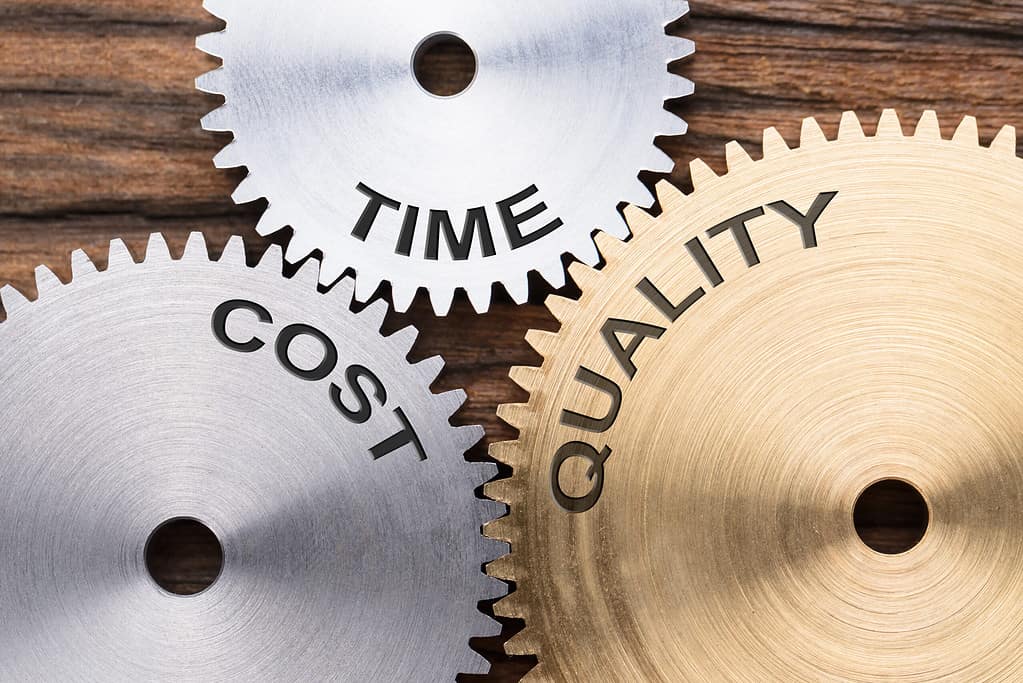Category: Concepts
R-Square Adjusted
Published:R-Square adjusted is a concept that is associated with regression analysis, which is a method used to identify which variables have an impact on a topic. Learn more about this Six Sigma concept.
Read more »
Effective Team Building with the GRPI Model: Setting Goals, Roles, Processes, and Relationships
Updated:The GRPI model was developed in the 1970s by Richard Beckhard, an American organizational theorist. Its ease of use and effectiveness keeps it in use today. Find out more about this.
Read more »Definition of Quality
Published:In business, you need to be able to meet the needs of your customers. Your product or service has to be up to a certain standard. It needs to hold up to an agreed-upon definition of quality.
Read more »
Mastering Scatter Plots: Tools for Business Decision-Making
Updated:If you need a quick tool for analyzing a mass of data in order to spot a likely relationship between two variables, a scatter plot is a good first step.
Read more »
Nominal
Published:There are four distinct hierarchical levels of measuring data. These are nominal, ordinal, interval, and ratio. Nominal is the most simple and ratio is the most complex. What does nominal mean, though?
Read more »Ratchet Device
Published:With improvements made in processes, it is important to make sure that your business doesn’t fall back on old bad habits. Incorporating ratchet devices is a method of preventing this from happening.
Read more »Profession
Published:The Lean Six Sigma profession is inherently complex because there are many ways to interpret this simple yet meaningful definition. Keep reading to learn more.
Read more »Error Mode Effects Analysis (EMEA)
Published:The famous poet, Alexander Pope said, “To err is human … ” Using Error Mode Effects Analysis (EMEA) will help mitigate, eliminate and prevent those human errors.
Read more »
Failure Mode and Effects Analysis: Managing Product and Process Failures
Updated:As complexity increases so does the probability of error. Scrap, rework, defects, retesting, and recalls are all expensive. With failure mode and effects analysis we’ll show you the true value of adopting this approach.
Read more »Trivial Many
Published:Where should you focus your improvement efforts; the vital few or the trivial many? Let’s define these two terms so you can answer the question.
Read more »Six Sigma Strategy
Published:Six Sigma is a philosophy of business and a set of tools for improving all your organizational processes. There are three strategies or desired outcomes of deploying Six Sigma. Let’s explore them further.
Read more »
Time Value Mapping: A Strategic Approach to Efficiency
Updated:Time value mapping helps to eliminate areas of waste and improve the efficiency of a work item process. Read on to learn what it is and how it works.
Read more »
The Impact of Process Capability: Driving Business Growth and Success
Updated:As the name implies, process capability is the ability of your process to meet your customer’s expectations. There are a number of calculated metrics which can be used to indicate your process capability.
Read more »
Optimizing Price Recovery: Benefits for Your Business
Updated:An understanding of this concept is an absolute must when it comes to making your business thrive. Find out more about Price Recovery and its impact on your business.
Read more »
Mitigating Type 1 Errors: Best Practices and Strategies
Updated:Don’t you hate it when you make a mistake? A type 1 error is a mistake you can make when erroneously interpreting your data. Let’s learn what that mistake is and how to keep from making it.
Read more »
Navigating Special Cause Variation in Quality Control
Updated:You have heard the old saying that no two grains of sand are alike. Variation is everywhere. But, some variation is predictable, some is not? Special cause variation in the non predictable type of variation. Let’s learn more about it.
Read more »Quorum
Published:Of the 7 Lean Six Sigma principles about getting the right people involved at the right time, quorum is one not just limited to improvement projects but also to any project a company may undertake.
Read more »
Defining “Product” in Lean Six Sigma
Updated:When you think about the word “product,” you probably think about the physical things you buy and use every day—diapers for your baby, toothpaste for your teeth, or a cup of coffee to get you through the afternoon. But when it comes to Lean Six Sigma (LSS), products aren’t always tangible.
Read more »
Plan, Do, Study, Act: A Roadmap to Process Excellence
Updated:Never-ending improvement is the heart of any continuous improvement effort. PDSA, developed by Dr. W. Edwards Deming, is one of the fundamental tools used today for continuous improvement.
Read more »Percent of Tolerance
Published:A definition of percent of tolerance is provided, and its importance, benefits, and best practices are explored.
Read more »
How to Calculate and Interpret the Interquartile Range
Updated:The interquartile range is a measure of the variation in your data. While it is a calculated number, it is often shown in a graphical format on a box plot.
Read more »
Understanding Kurtosis and What It Really Tells Us About Our Data
Updated:When someone says your data has kurtosis, do you think this is referring to some disease? Kurtosis can be a natural state of your data. Let’s find out more about kurtosis and what it means.
Read more »Kaikaku
Published:Dr. W. Edwards Deming is often quoted as saying, “It is not necessary to change. Survival is not mandatory.” But should the change be radical or incremental? Kaikaku is the Japanese word for “radical change”
Read more »
Optimize the Total Costs of Quality
Updated:Don’t let the costs of poor quality eat your profits for breakfast. Learn how to stay competitive by understanding the components of TCOQ and how to optimize them – and ultimately the quality of your product or service.
Read more »